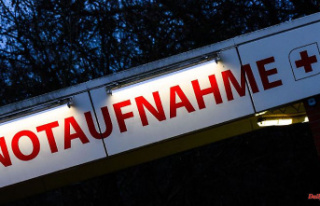Bicycles have become expensive. But above all in the segment of everyday and city bikes, where sporty demands are secondary and the components are cheaper, you can still find affordable bikes.
Not only since the inflation in the wake of the energy crisis, but for years, bicycles have become more and more expensive. However, the price increase, as calculated by associations such as the ZIV in Berlin in their statistics, is also based on the boom in electric bicycles. These are simply more expensive with their additional components and thus raise the overall average.
Nevertheless: Even with normal bicycles, which are also technically more and more complex, the price tags are corrected upwards again and again. In addition to general inflation, they are also still being hit by the supply chain problem, which is leading to bottlenecks and corrections. If a bike costs around 500 or 600 euros new today, you almost rub your eyes.
But there are still models that should be considered generally affordable. Especially in the city bike segment. Unlike special bikes and sports machines, these do not necessarily have to meet higher demands in terms of equipment and components. One of the less expensive bikes is the Loft 7D from the Electra brand, which belongs to the US group Trek, and which we are saddled with as an example.
Purpose: Electra describes the model as a "stylish city runabout" with low-maintenance technology. The 7D is suitable for daily routes - whether to work or to the supermarket.
The brand, founded in the 1990s by two Berliners in San Diego, California, cites at least two reasons: Thanks to the upright seating position, cyclists were able to keep an overview in many traffic situations. The external effect should not be neglected when cruising. Electra describes the bike as a modern, minimalist classic.
The technology: The keyword minimalism can be taken seriously. Because the 7D lacks things that are actually integral parts of a city bike. A luggage rack is missing, as is lighting, which would make the bike roadworthy in terms of the Road Traffic Licensing Regulations (StVZO).
The Electra is not a "comfortable companion and pack donkey for everyday and short distances", as the ADFC Cityräder defines it on its website. It's more in the direction of urban bikes, a genre that focuses primarily on visual features.
Most of the components are branded. The Shimano Acera rear derailleur on the test bike comes from the entry-level mountain bike segment. The seven gears of the Shimano cassette can be actuated using a twist grip, as is usually found in connection with a derailleur gear on price-sensitive children's bikes.
KMC contributes the chain, which is nickel-plated to protect against corrosion. However, deceleration is provided by simple double-jointed rim brakes, and hydraulics are out of the question in the price range.
The D7 rolls on 28-inch wheels - which promises a certain level of smoothness. Rims, seat post, handlebars, crank, chainring and frame are made of aluminum alloy - the frame tubes, "Made in Taiwan", are, unlike the aluminum bikes of the early days, so thin that you could actually mistake the Loft for a steel bike classic.
Additional components, accessories, peripherals: Additional details reinforce the retro look. The frame has the glossy finish that was common in the past, and the handlebar grips are covered with light brown artificial leather that the manufacturer says was "hand-stitched". The saddle is kept in the same tone. The angular, shiny double-chamber rims continue to provide the visual finishing touches.
A minimum of suitability for everyday use in the rain is ensured by the mudguards painted in the frame color and the somewhat rickety chain guard, which is intended to protect the trouser legs from dirt and holes. What should be particularly low-maintenance about the model compared to others remains unclear.
For example, there is neither an easy-care drive belt instead of a chain, nor a hub gear that is usually less susceptible to damage than the chain counterpart - on which many current city bikes rely. The wheels can be loosened with normal nuts, there are no practical quick release skewers, nor are there expensive thru-axles that are conducive to directional stability.
Practical, and actually not available on every frame: fastening eyelets on the down and seat tubes. Bottle holders, frame bags or bicycle locks can be attached here. A ring lock can also be retrofitted, a corresponding device can be found on the seat stays.
If you want to give the city bike characteristics a boost, you can use an EQ ("equipped") version of the 7D. A luggage rack and a Nexus hub gear are then installed on board for an extra charge, as well as a dynamo-powered LED front light and a battery-powered rear light. At the front, the 15 lux of the "Brio" model from Spanninga sufficiently illuminate at least urban areas. Matching bicycle baskets or bells are available in the web shop.
The driving impression: Despite the large wheels, the Loft is almost lively. The bike, which is quite light at 13.8 kilos, can be steered surprisingly directly, which can be experienced as an advantage in the city. Some people may find the steering behavior a touch too nervous. The driving character always takes some getting used to.
More important: the sitting position. In fact, you ride very upright in the comfortable, wide saddle. The frame geometry doesn't even let sporting ambitions arise and ensures relaxation and a good view of the traffic situation. The handlebars are also comfortable. The handles are curved towards the driver, which relieves the strain on the shoulders.
The loft is more unforgiving when it comes to driving comfort. Bumps are hardly cushioned or dampened. The tires could also be wider than the actual 37 millimeters of the tires for more puncture protection. After all, the front wheel rotates in a steel fork, which is softer and less rigid than aluminum models.
The derailleur reacts to commands from the rotary switch with a noticeably delayed response. Since you don't have a performance bike under your butt with the Loft, you can get over this as well as the coarser gradation of the single drive. However, you have to be careful that you don't shift gears while stationary - which could be tempted by the twist grip that is often installed in connection with hub gears. Even Electra points out the danger of a chain blockade on its website.
As a rule, a comparable Tourney 7-speed gear system is installed instead of the Acera. "With the current delivery difficulties, there may be changes," says Electra employee Lars Waser, explaining the deviation on the test bike.
The price: The Loft 7D Step-Over costs 549 euros in the driven "naked" version. It is available in two frame sizes, which should fit body sizes from 1.62 to 1.93 meters. The model is also built as a step-thru version with a lowered and slightly curved top tube. If you buy the EQ version, you have to calculate with 799 euros. Best of all: According to the manufacturer, the bike is "available immediately or can be ordered from dealers".
The conclusion: chic and cheap are not mutually exclusive - this is shown by the Electra Loft 7D Step-Over. But you pay for the low price with compromises in the equipment. On the other hand, many expensive bikes often have high-tech components on board, the possibilities of which some cyclists are not likely to exploit.
If you really only want to get from A to B with a bike, you won't save at the wrong end with the Electra Loft 7D. But if you want a little more low-maintenance and practical use in everyday life, you shouldn't shy away from the surcharge for the EQ version.












